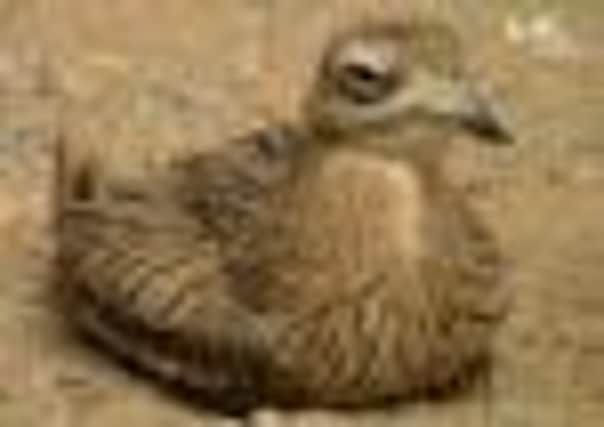Birdwatch: Strange-looking visitor is a first for reserve


It was present last Thursday at the RSPB’s Old Moor reserve, in South Yorkshire, a first for the reserve and the Barnsley area, before flying off in the late evening.
Presumably, the same bird turned up on Saturday afternoon at Port Clarence, close to the Middlesbrough transporter bridge, where it remained before disappearing again on Monday.
Advertisement
Hide AdAdvertisement
Hide AdThe stone curlew’s crouching stance and beady bright yellow eyes give it an almost reptilian look and support for the theory that birds are descendants of dinosaurs.
It also has swollen knee joints from which it gets its traditional name of “thick knee” but it is not related in any way to the curlew. The link comes from its loud quavering call which rather resembles that produced by our familiar moorland bird.
Stone curlews are a summer migrant, returning to England in late March and April from wintering areas in southern Spain and France and north and west Africa.
They are now found only on the Brecklands of Norfolk and Suffolk and in Wessex, although in the 19th century they bred in 23 English counties, including Yorkshire.
Advertisement
Hide AdAdvertisement
Hide AdThey were found, along with the great bustard, on the then vast expanse of chalk grasslands which made up the Yorkshire Wolds.
At one time, in the 1980s, the country’s stone curlew population reached a low of around 130 pairs but now, thanks to the hard work and co-operation of the RSPB, other conservation groups and landowners, the situation is much healthier.
A target of 300 breeding pairs by 2010 was, in fact, reached in 2005 with 336 breeding pairs the following year. The new target of 350 pairs by 2015 was again surpassed last year when there were 370 pairs.
Another conservation success is the common crane, and several of these large elegant birds have been seen across the region with a first summer bird arriving last week and remaining into this, at the Fairburn Ings reserve, near Castleford.
Advertisement
Hide AdAdvertisement
Hide AdAn adult was seen in fields near Buckton Hall, East Yorkshire, while two were at Sunk Island on the Humber.
Britain’s rarest harrier, the Montagu’s, has also been reported with one, along with four hen harriers, at Hoddy Cows Lane, Bempton, and males seen at Flamborough, Spurn and Potteric Carr, Doncaster.
A male red-footed falcon was seen at Spurn on Monday, and a serin and red-rumped swallow have been among other sightings there.
A spoonbill was seen at Hornsea Mere and one in flight over Bridlington Bay.
Advertisement
Hide AdAdvertisement
Hide AdWaders, many such as knot and godwits in bright red summer plumage, continue to be seen on passage through the region, while there have also been more wood sandpipers with five at Wheldrake Ings and four at Edderthorpe Flash, South Yorkshire.
Some little and Temminck’s stints have also been reported with two of the latter on a pond at Bewholme Hall, East Yorkshire.
Visitors to Scarborough can now view a pair of nesting peregrine falcons on the cliffs below the castle from a watchpoint set up by the RSPB on the resort’s Marine Drive. The viewpoint, set up with the support of Scarborough Borough Council, is staffed from 10.30am to 4.30pm every Thursday to Sunday and will be open until July 17.
It follows the highly peregrine watchpoint at Malham Cove, again open this year until August 31.